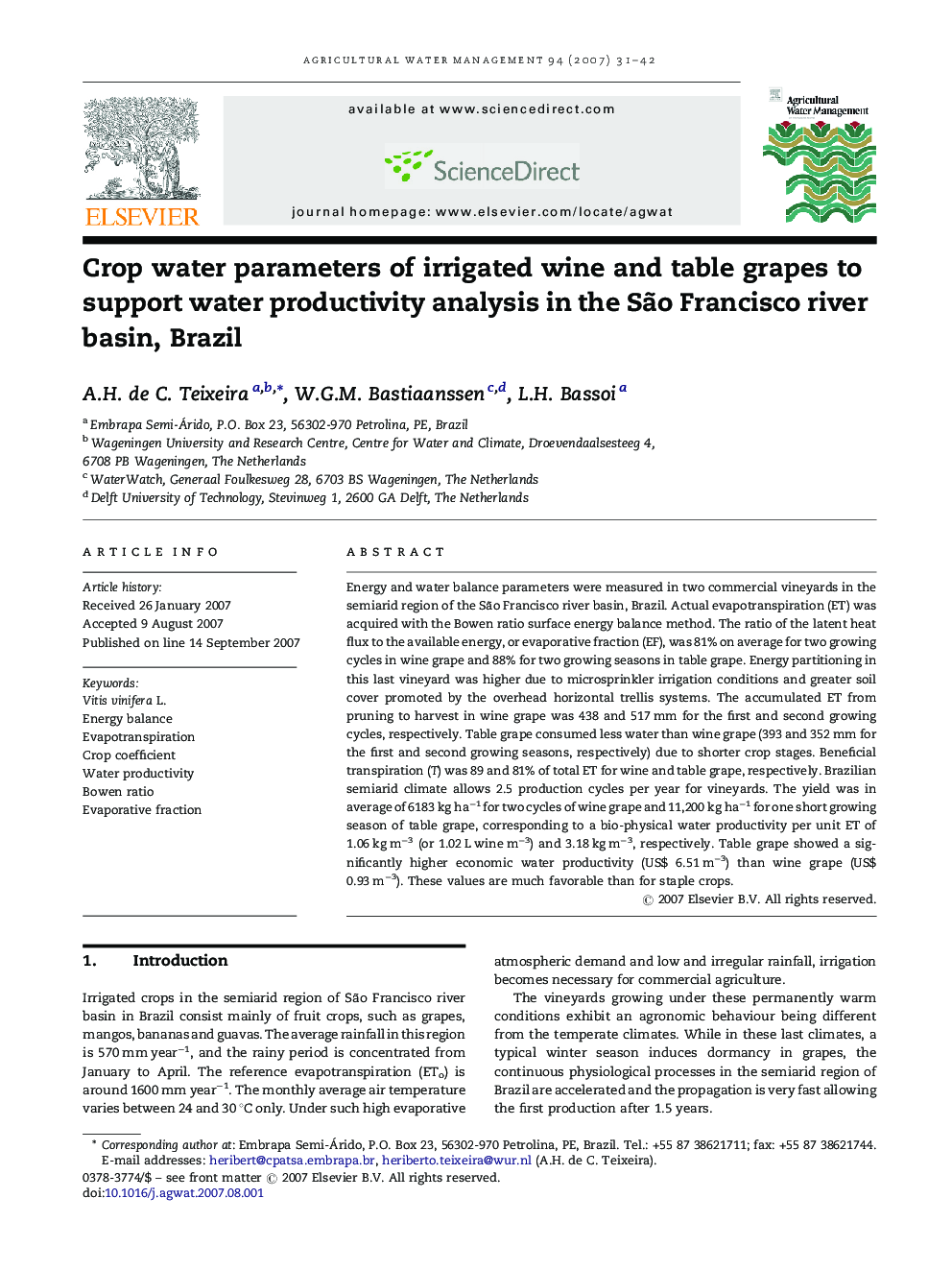| Article ID | Journal | Published Year | Pages | File Type |
|---|---|---|---|---|
| 4480214 | Agricultural Water Management | 2007 | 12 Pages |
Energy and water balance parameters were measured in two commercial vineyards in the semiarid region of the São Francisco river basin, Brazil. Actual evapotranspiration (ET) was acquired with the Bowen ratio surface energy balance method. The ratio of the latent heat flux to the available energy, or evaporative fraction (EF), was 81% on average for two growing cycles in wine grape and 88% for two growing seasons in table grape. Energy partitioning in this last vineyard was higher due to microsprinkler irrigation conditions and greater soil cover promoted by the overhead horizontal trellis systems. The accumulated ET from pruning to harvest in wine grape was 438 and 517 mm for the first and second growing cycles, respectively. Table grape consumed less water than wine grape (393 and 352 mm for the first and second growing seasons, respectively) due to shorter crop stages. Beneficial transpiration (T) was 89 and 81% of total ET for wine and table grape, respectively. Brazilian semiarid climate allows 2.5 production cycles per year for vineyards. The yield was in average of 6183 kg ha−1 for two cycles of wine grape and 11,200 kg ha−1 for one short growing season of table grape, corresponding to a bio-physical water productivity per unit ET of 1.06 kg m−3 (or 1.02 L wine m−3) and 3.18 kg m−3, respectively. Table grape showed a significantly higher economic water productivity (US$ 6.51 m−3) than wine grape (US$ 0.93 m−3). These values are much favorable than for staple crops.
